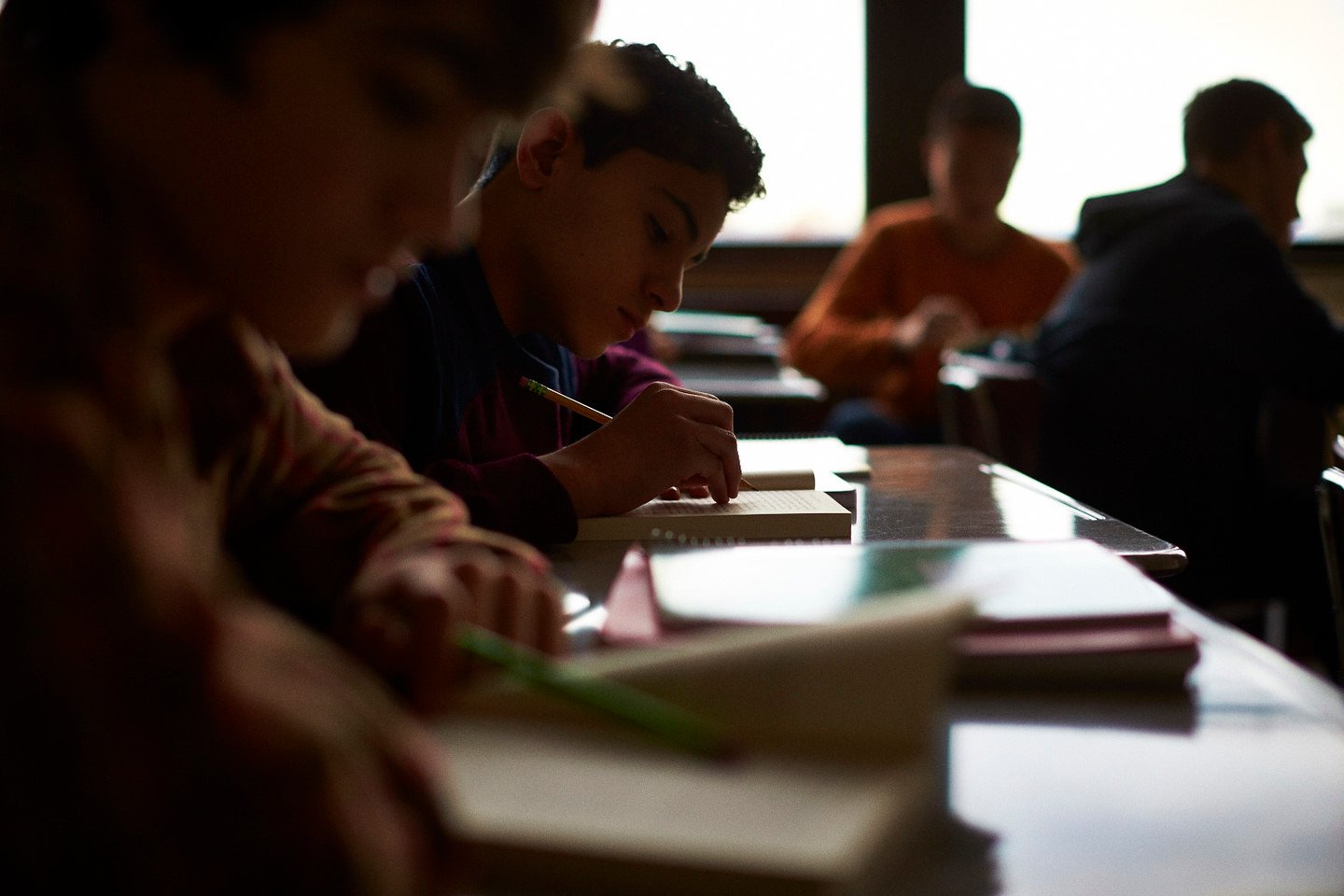Posted in: Aha! Blog > Wit & Wisdom Blog > Implementation Support > What a Wonderful World
In this five-part blog series, teacher-writer Emily Gula connects with students and teachers around the country to learn about their successes using Wit & Widsom® in their English classrooms.
Wit & Wisdom lessons explore five Content Framing Questions. The Content Framing Questions are key questions that lead students through a series of five Content Stages: Wonder, Organize, Reveal, Distill, and Know. Each of these stages begins with a question and builds an important habit of mind to help students closely read complex text.

Although my experiences teaching elementary school were more often filled with the red noses of students than the red roses of Louis Armstrong’s “What a Wonderful World,” there were many moments of wonder—for me and my students. As a teacher-writer for Wit & Wisdom, I have learned that the Wonder Content Stage generates many wonder-full moments. This year, students and teachers around the country are discovering the power of Wonder, the first of Wit & Wisdom’s five Content Stages.
CREATING COHESION
Caitlin McGregor works with students in kindergarten through third grade as an early literacy specialist in Philadelphia. I caught up with her to discuss her experience with how the five Content Framing Questions have helped teachers in her school build coherence within and across classrooms.
McGregor explains that using the questions in each classroom promotes consistent collaboration within the school, “because we’re all talking about the same topics, and because we’re all asking our students the same questions.” Since students within each grade level apply the same questions to the same books, they “can continue that [text discussion] with a friend in a different class…out in the school yard or in the cafeteria.” In turn, teachers can swap strategies for how to best guide students in analyzing those texts at each Content Stage.
McGregor points out that the Content Framing Questions help streamline the lesson planning process for teachers. The standards-aligned questions help teachers focus on how each lesson is “hitting the standard.” Since the five questions provide a purposeful framework that students can transfer across modules and grades, McGregor observes that they help teachers plan lessons that build “to where students need to be by the end of the year.”
ENCOURAGING CURIOSITY
When students first encounter a text, they ask, “What do I notice and wonder about this text?” Greeting each new book with this question encourages curiosity. It takes students beyond a brief glance at the front cover, inviting them to sit down with the text and stay awhile.
When students routinely take time to ponder a new text, wondering becomes an integral part of the reading process that students expect and enjoy. They learn strategies to help them notice and wonder, such as annotating a text with questions, exploring unfamiliar vocabulary words, or completing a chart with observations, inferences, and questions. These actions, practiced over time, build students’ habit of curiosity. As McGregor explains, “Every time they pick up a story now, they know that there is something to be learned and explored in that story.”
BUILDING CONFIDENCE
The Wonder stage empowers students by acknowledging that questions are a natural part of reading. Instead of stigmatizing questions as signs of shortcomings, Wonder builds a classroom culture that encourages all students to ask questions, offering everyone an entry point into complex text.
Students of all reading levels benefit from the Wonder stage. McGregor explains, “It helps no matter the level…The kids are able to read and interact with a text [that may be] at a level much higher than in their independent reading and that builds their confidence. In this way, every child has an opportunity to actively participate in both the discussion and the text.” Through rereading the text to search for answers to their questions, all students deepen their insights into a complex text. Since rich writing contains many layers, multiple reads allow students to notice increasingly nuanced details—whether they’re reading at, above, or below grade level.
As students experience the Wonder stage, they build capacity for independently reading complex texts. McGregor has seen students transfer their skills of noticing and wondering to new situations: “As soon as they get a new story…they are already…looking to see what they can figure out.” She has noticed students applying these strategies during Guided Reading and on literacy assessments, describing how questioning the text is “becoming more innate to them.”
The Wonder mindset even transfers to other subjects. According to McGregor, students “are noticing and wondering about everything all day long.”
To borrow a phrase from Louis Armstrong, that sounds like a wonderful world to me.
Submit the Form to Print

Emily Gula
Emily Gula is a content lead at Great Minds, where she led a team of teacher-writers in creating the first-grade modules of Wit & Wisdom. Emily began her career teaching elementary school in New Orleans, then worked in New Orleans schools as a reading interventionist and literacy coach.
Topics: Implementation Support











